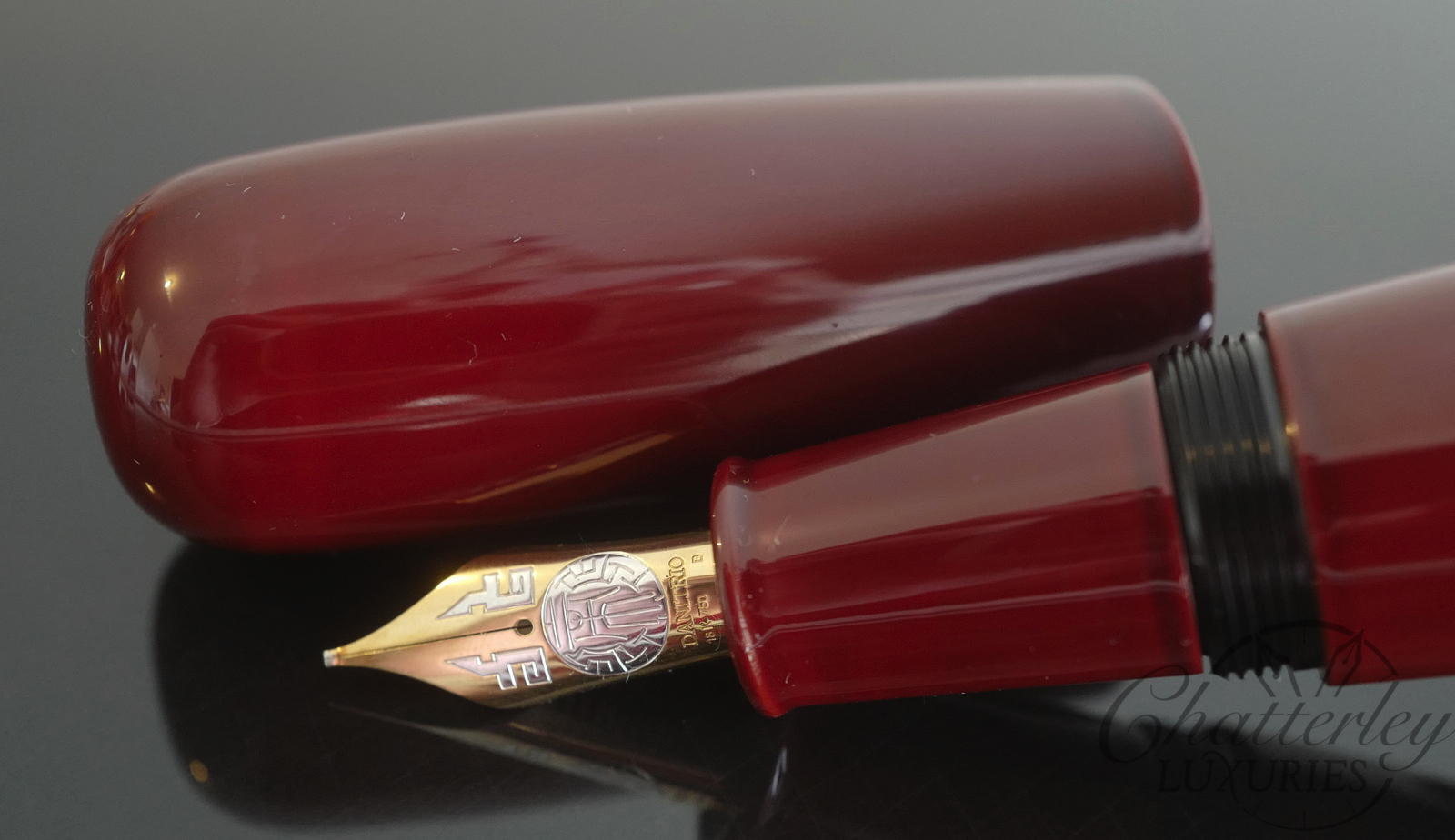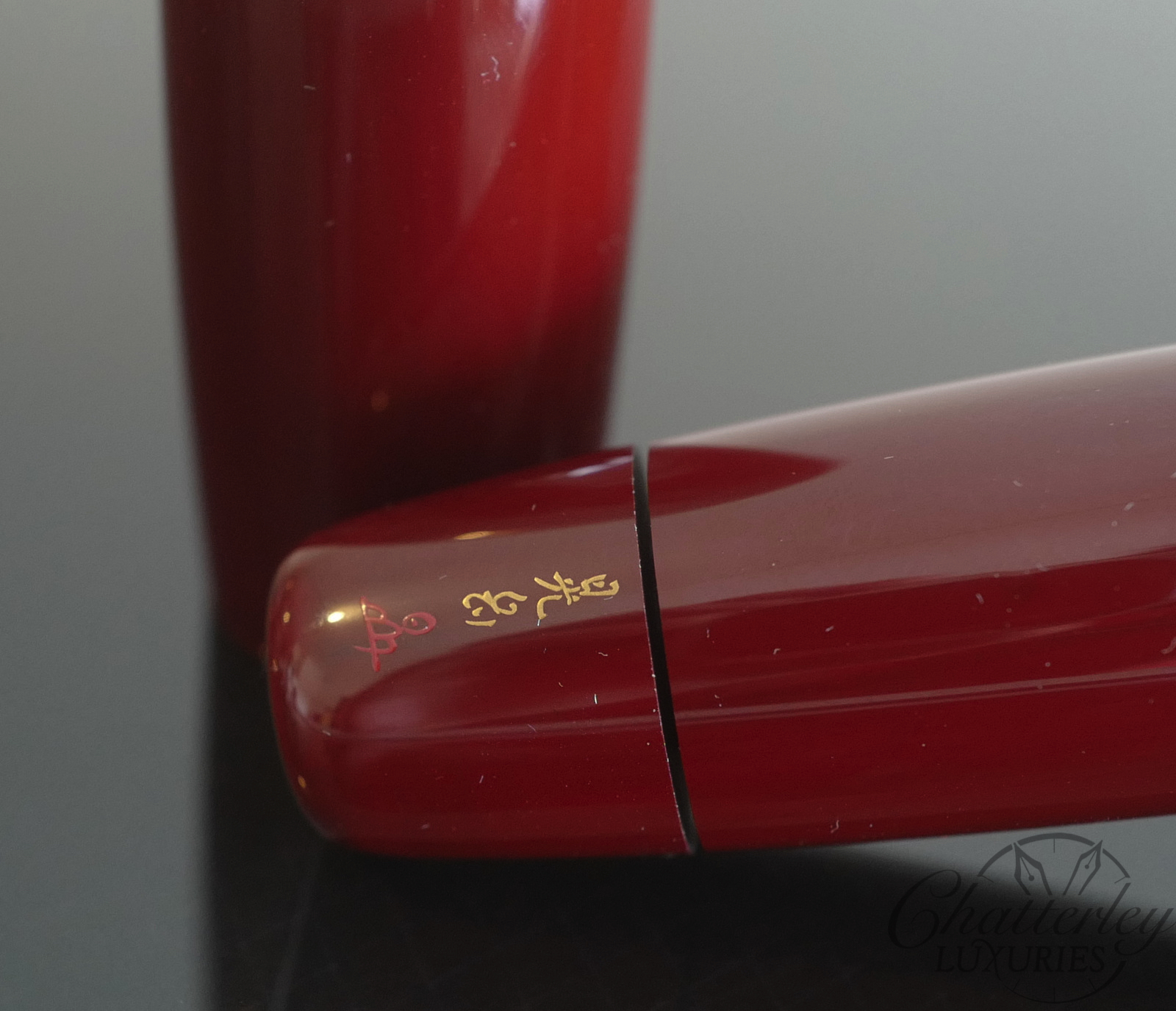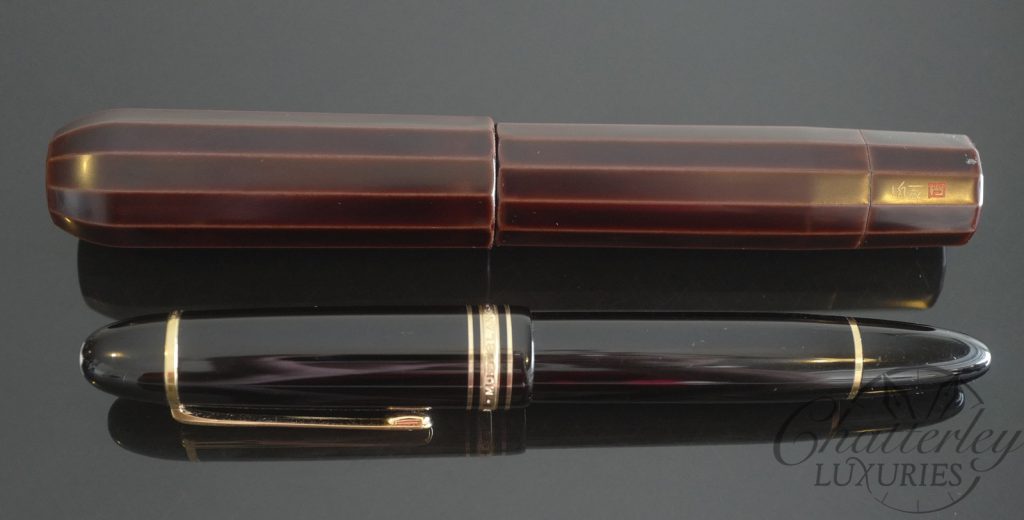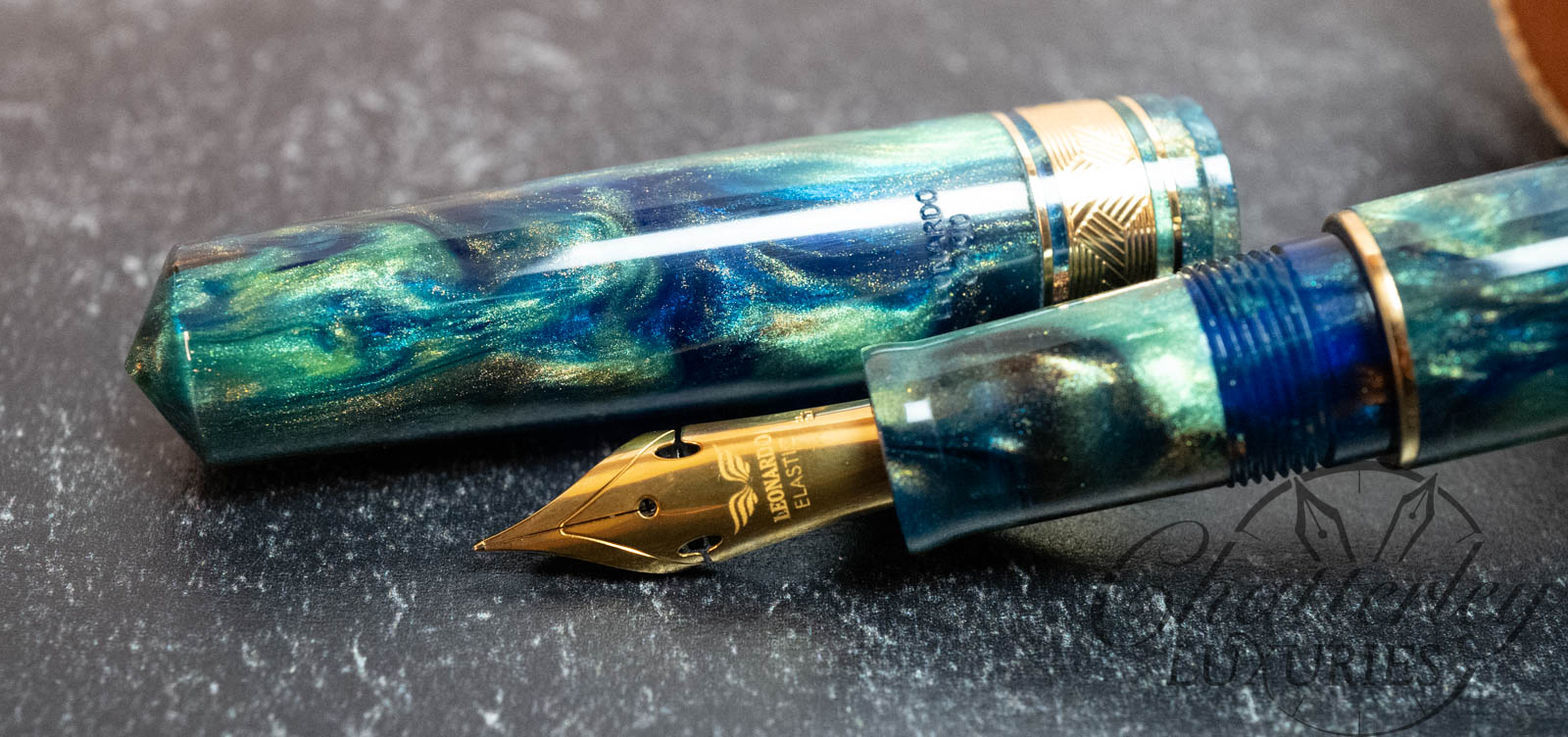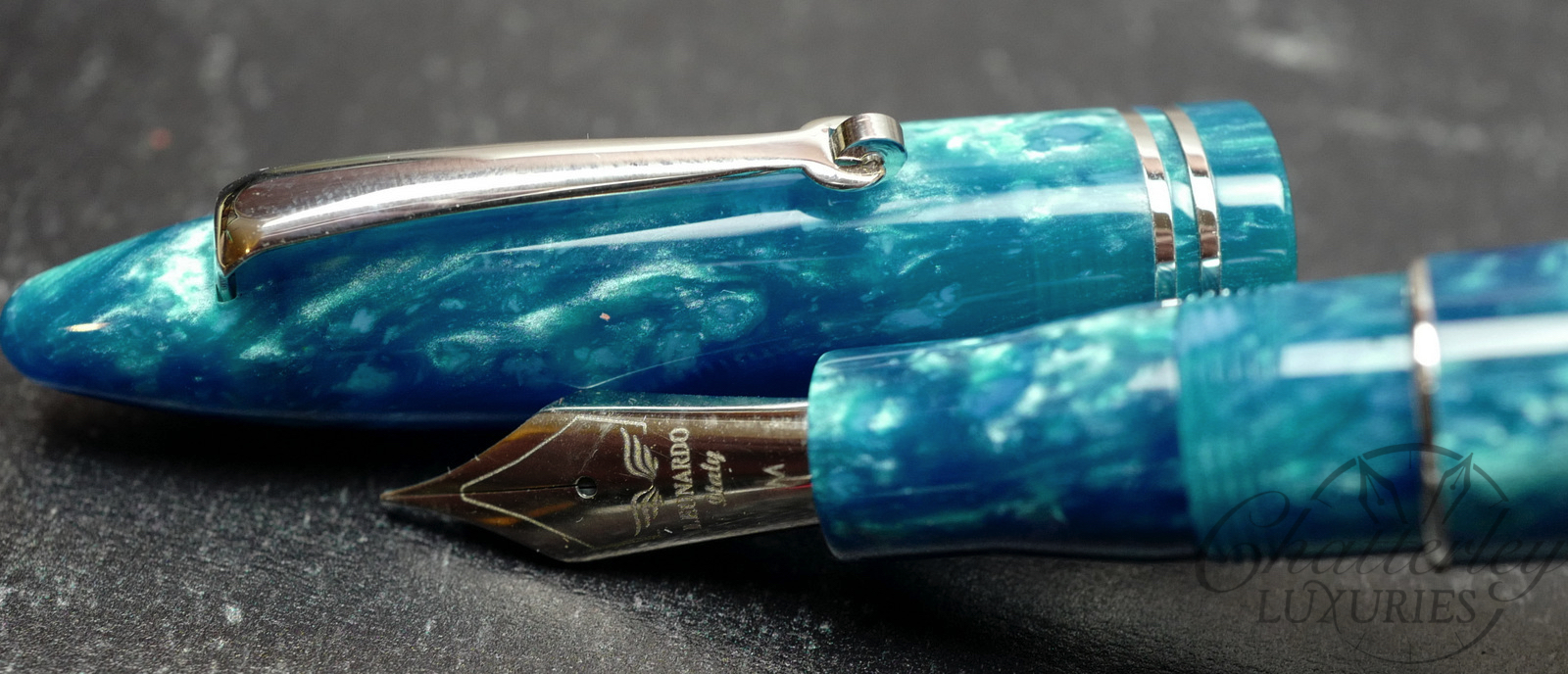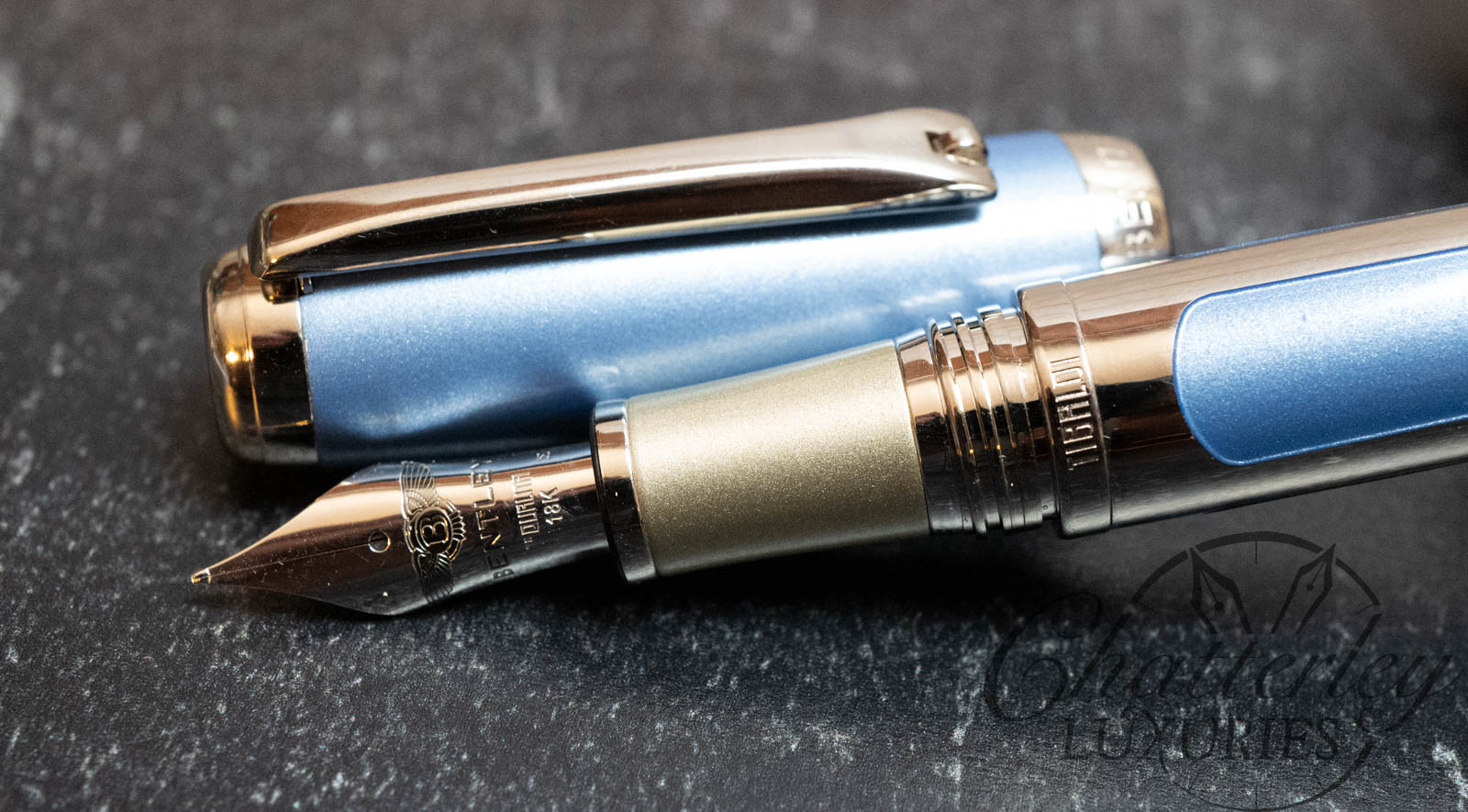Danitrio Urushi Tame-Nuri Red on Yokozuna Fountain Pen
This pen is brand new, but does not come with its Original box. They are short from the suppliers due to Covid. This pen is HUGE. Ive attached a picture of it compared to a Montblanc 149. The picture is the faceted version, but the round is the same size. Contact us for the Chatterley Loyalty price.

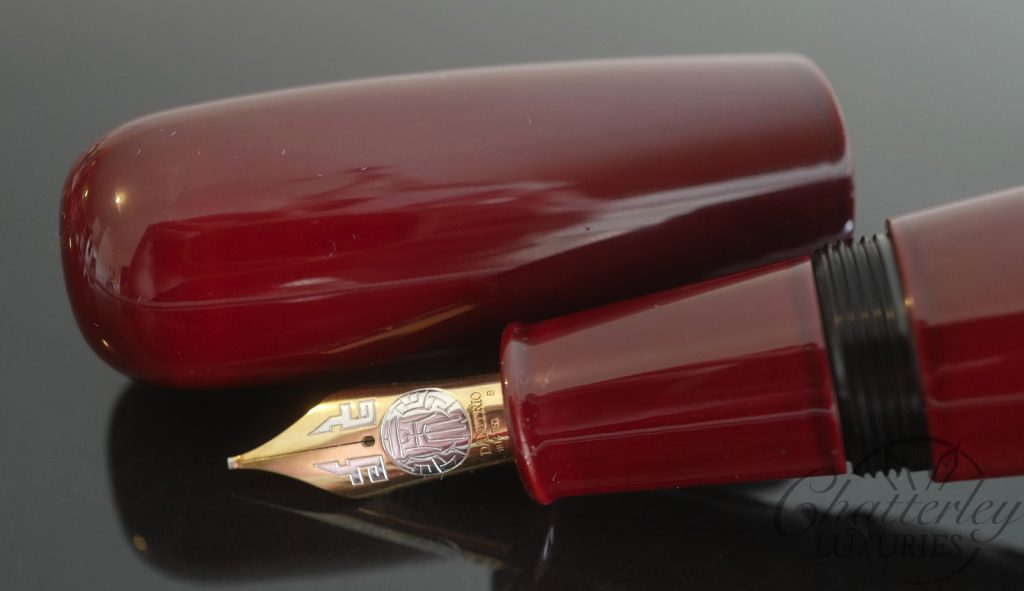
Craftsmen call Urushi a living thing. Its qualities differ even from the same trees, but the quality is different from the trunk or branches. Different qualities from different trees or different areas or countries. Then, crude Urushi must be refined to make more than 10 different qualities of Urushi for different usage. Now craftsmen have to pay more than $600.00 per pound for genuine Japanese Urushi, $250.00 for Urushi imported from China. They use it on different occasions and different places, while manmade Urushi or plastic paint only cost a few dollars a pound. Genuine Urushi is like pure gold, only for fine jewelry. and pure gold is too expensive for cheap works with cheap materials.
The base for Urushi paintings must be smooth and strong in order to have a good Urushi painting, which will last thousands of years. When the base is ready for painting, the first painting uses Sabi, Urushi mixed with polishing powders, as its base painting and call it Shita-nuri, the base painting. Then, Naka-nuri, the interim painting with Urushi is preparing for better Uwa-nuri, the finishing part of painting. The color of the interim painting has to be selected according to the color of the finishing part of painting. All these works are usually done by Nu-shi, craftsmen of Urushi paintings, painting 7 times in average and it takes 2-3 weeks before the Nu-shi can send back the pens to our Maki-e sh, who will do more Urushi painting works or Maki-e onto the pens.
Good basic paintings start with base painting, which the craftsmen paint twice or three times with Urushi mixed with finishing powders to make the base hard and durable. This is then followed up by the interim paintings which is done by one or two layers in preparation for finishing the painting. For Tame-nuri, the interim painting is done with the color for the Tame-nuri, if a red color is the goal, the red Urushi is used for interim. The finishing paintings on Tame-nuri should use Suke-Urushi or translucent Urushi, which is the cleanest in ember color paint over the red Urushi and make the red Urushi as the bottom of pond. Tame-nuri means painting to look as a pond. So Midori-dame is Tame-nuri in Green and Ki-dame is Tame-nuri in yellow and so on.
Urushi before refined is divided into oiled or non-oiled Urushi. Oiled Urushi is lustrous when it is painted but cannot be burnished, while Non-oiled Urushi is not lustrous itself, but it can be burnished to very lustrous. The Shita-nuri (base paintings) for different basic paintings use same methods for the good base painted with Urushi mixed with polish powders to harden the base. Then, Naka-nuri (interim paintings) is done to cover the base paintings and prepare for good Uwa-nuri (Finish paintings). Roiro-migaki use the designated color Urushi to paint the surface with repetitions of paint and burnish till the lustrous come out.
Hana-nuri uses Oiled Urushi to paint the surface. It already has natural luster when it dried. Roiro-migaki is much shinier than Hana-nuri, while Hana-nuri is much more popular in Japan, Especially among the Sa-doh (The Tea Ceremony). Technically Hana-nuri is much simpler than Roiro-migaki, but Hana-nuri does not allow any little mistake, as once a mistake is made, the work has to start all over again. Good Roiro-migaki doesn’t have any difficult technique, but it needs good quality domestic Urushi and good timing after two weeks for Urushi to dry and careful burning in order to get the best luster. Our Maki-e shi Omote says that all good results have to depend on the craftsman’s sixth sense.
The relationship between Tame-nuri and Irokeshidame-nuri is the same relationship between Rioro-migaki and Irokeshidame-nuri. The former one uses non-oiled Urushi to paint and the latter use oiled Urushi, and then the former needs repetitions of paint and burnish, while the other doesn’t need any burnishing at all, and keep the surface not shiny as Tame-nuri.
There is no 100% transparent Urushi. The clearest Urushi still has a light brown or amber color. The interesting thing with Tame-nuri is when the transparent Urushi is painted over the color Urushi, the color will change because this transparent Urushi is NOT 100% transparent like man-made “Urushi” which is 100% clear.
The translucent Urushi has to be made with Japanese Urushi, because Urushi from China or Vietnam are all black when they sap from the trees and they can never be refined to be Suke-Urushi to be used for the basic paintings.

